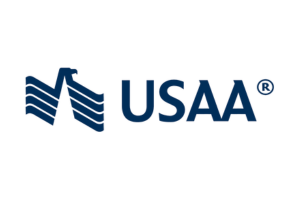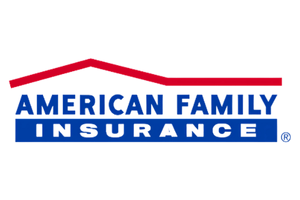Car Seat Laws in Oklahoma
Understanding Car Seat Laws in Oklahoma: What Parents Need to Know to Keep Their Children Safe on the Road
Secured with SHA-256 Encryption





Find the Lowest Car Insurance Rates Today
Quote’s drivers have found rates as low as $42/month in the last few days!




Table of Contents
Table of Contents


Licensed Insurance Agent
Heidi works with top-rated life insurance carriers to bring her clients the highest quality protection at the most competitive prices. She founded NoPhysicalTermLife.com, specializing in life insurance that doesn’t require a medical exam. Heidi is a regular contributor to several insurance websites, including FinanceBuzz.com, Insurist.com, and Forbes. As a parent herself, she understands the ...
Heidi Mertlich


Licensed Insurance Agent
Michelle Robbins has been a licensed insurance agent for over 13 years. Her career began in the real estate industry, supporting local realtors with Title Insurance. After several years, Michelle shifted to real estate home warranty insurance, where she managed a territory of over 100 miles of real estate professionals. Later, Agent Robbins obtained more licensing and experience serving families a...
Michelle Robbins
Updated September 2024
Car seat laws are put in place to protect children and ensure their safety while traveling in vehicles. Understanding these laws and how they apply to your state is important for every parent and caregiver. In Oklahoma, specific regulations dictate the use of car seats for children, depending on their age, weight, and height. Let’s delve into the details of car seat laws in Oklahoma and why they are essential for child safety.
Understanding the Importance of Car Seat Laws
Car seat laws play a crucial role in safeguarding children during car rides. Motor vehicle accidents are a leading cause of injury and death among children, and using appropriate car seats can significantly reduce the risk of harm. By following these laws, parents and caregivers can provide the best protection for their little ones.
But why are car seat laws so important? Let’s delve deeper into the topic.
The Role of Car Seat Laws in Child Safety
Car seat laws aim to ensure that children are secured in age and size-appropriate restraints while traveling. By using the right car seat or booster seat, children are protected from severe injuries in the event of a crash. These laws establish guidelines to keep children secure and reduce the risk of ejection or impact-related injuries.
When it comes to child safety, there is no one-size-fits-all solution. Car seat laws take into account the different stages of a child’s growth and development, providing specific guidelines for each age group. This ensures that children are properly protected at every stage of their journey, from infancy to adolescence.
For infants, rear-facing car seats are recommended as they provide optimal support for their delicate neck and spine. As children grow older, they transition to forward-facing car seats and eventually to booster seats, which help position the seat belt correctly across their bodies. By adhering to these laws, parents and caregivers can ensure that their children are always in the appropriate car seat for their age and size.
Why Oklahoma Enforces Car Seat Laws
Oklahoma, like numerous states, recognizes the importance of child safety in vehicles. By enforcing car seat laws, Oklahoma aims to protect children from injuries or fatalities resulting from car accidents. These laws are designed to ensure that children are restrained correctly, minimizing the risk of harm and providing parents and caregivers with peace of mind.
But what led Oklahoma to prioritize car seat safety? The answer lies in the alarming statistics of child injuries and fatalities on the road. According to the Oklahoma Highway Safety Office, motor vehicle crashes are the leading cause of death for children aged one to twelve in the state. This stark reality highlights the urgent need for strict car seat laws and their enforcement.
By implementing and enforcing these laws, Oklahoma aims to raise awareness about the importance of proper child restraint systems. The state provides educational resources and programs to help parents and caregivers understand the correct installation and use of car seats. Additionally, law enforcement agencies actively monitor compliance with car seat laws to ensure the safety of Oklahoma’s youngest passengers.
Ultimately, car seat laws are not just regulations to be followed; they are a vital component of child safety. By adhering to these laws, parents and caregivers are taking proactive steps to protect their children and prevent unnecessary injuries or tragedies on the road.
Free Auto Insurance Comparison
Compare Quotes From Top Companies and Save
Secured with SHA-256 Encryption
Overview of Oklahoma’s Car Seat Laws
Oklahoma’s car seat laws have specific requirements based on a child’s age, weight, and height. It’s essential to understand these requirements to comply with the law and ensure your child’s safety.
Age and Weight Requirements
Children under the age of two or those who have not yet reached the weight and height requirements for a booster seat must be secured in a rear-facing car seat. This seating position offers optimal protection for young children and infants.
When it comes to rear-facing car seats, it’s important to choose one that meets the highest safety standards. Look for seats that have a five-point harness system, side-impact protection, and adjustable headrests to provide maximum comfort and safety for your child.
Additionally, it’s crucial to ensure that the rear-facing seat is correctly installed in your vehicle. Follow the manufacturer’s instructions carefully and use the seat’s built-in level indicators to ensure a proper recline angle. Remember to tighten the seat’s harness straps snugly against your child’s body for a secure fit.
Once a child turns two or reaches the minimum weight and height for a forward-facing seat, they must be secured in a front-facing car seat. This type of seat provides protection for children who have outgrown rear-facing seats but are not yet suitable for using booster seats.
Front-facing car seats come with a harness system that restrains the child during a crash, reducing the risk of injury. When selecting a front-facing car seat, look for models that have adjustable harness heights, energy-absorbing foam, and reinforced side-impact protection to enhance your child’s safety.
Remember to adjust the harness straps to the appropriate height for your child and ensure that they are snugly secured. Check the seat’s weight and height limits regularly to know when it’s time to transition to the next type of car seat.
Children above the age of four and who have reached the weight and height requirements can transition to a booster seat. Booster seats enable proper seat belt positioning for children who have outgrown a front-facing car seat but are not yet tall enough for the vehicle’s seat belts.
When choosing a booster seat, opt for one that has a high back and side wings for added protection in case of a side-impact collision. Look for models with adjustable headrests and shoulder belt guides to ensure that the seat belt fits correctly across your child’s body.
It’s important to note that Oklahoma law requires children under the age of eight to be properly secured in an appropriate car seat or booster seat. This ensures their safety and reduces the risk of severe injuries in the event of a car accident.
Types of Car Seats Required by Law
Oklahoma law mandates the use of specific car seats according to a child’s age, weight, and height. These include rear-facing car seats, forward-facing car seats, and booster seats.
Rear-facing car seats are suitable for infants and young children. These seats provide substantial support to protect a child’s head, neck, and spine in case of a collision. It’s crucial to ensure that the rear-facing seat is correctly installed and that the child is securely fastened.
Forward-facing car seats are designed for children who have outgrown rear-facing seats but are not ready for a booster seat. These seats come with a harness system that restrains the child during a crash, reducing the risk of injury. Look for models that have adjustable harness heights, energy-absorbing foam, and reinforced side-impact protection.
Booster seats help position the vehicle’s seat belt correctly for children who have outgrown forward-facing car seats. Using a booster seat ensures that the seat belt fits securely across the child’s chest and lap, providing adequate protection. Look for models with high backs, side wings, and adjustable headrests for enhanced safety.
By understanding and following Oklahoma’s car seat laws, you can ensure that your child travels safely and securely in your vehicle. Regularly check for updates in the law and stay informed about the latest safety recommendations to provide the best protection for your child.
Penalties for Violating Car Seat Laws in Oklahoma
Violating car seat laws in Oklahoma can result in penalties and fines. It’s essential to adhere to these laws to avoid not only legal consequences but also to ensure the safety of your child.
When it comes to child safety, Oklahoma takes car seat laws seriously. These laws are in place to protect young passengers and reduce the risk of injuries in the event of a car accident. Understanding the fines and penalties associated with violating these laws is crucial for every parent and caregiver.
Fines and Penalties
In Oklahoma, the fine for a first-time offense of violating car seat laws can range from $50 to $100. This may seem like a small amount, but it is a reminder of the importance of following these regulations. The fine for subsequent offenses can increase significantly, putting a strain on your finances.
Moreover, the financial impact is not the only concern. Violating car seat laws can have serious consequences for the safety of your child. Properly securing your child in an appropriate car seat reduces the risk of severe injuries or even death in the event of a car accident. The fines and penalties associated with car seat violations serve as a deterrent to ensure that parents and caregivers prioritize the safety of their little ones.
Impact on Driving Record
In addition to fines, violations of car seat laws can impact your driving record. Accumulating too many traffic offenses, including car seat violations, can lead to increased insurance rates and even suspension of your driver’s license. This means that a momentary lapse in following car seat laws can have long-lasting consequences for your driving privileges.
It is important to note that the impact on your driving record goes beyond the immediate consequences. Insurance companies consider your driving history when determining your coverage rates. Multiple car seat violations can be seen as a pattern of irresponsible behavior, resulting in higher insurance premiums. Additionally, accumulating too many violations can lead to the suspension of your driver’s license, making it difficult to commute or fulfill your daily responsibilities.
Understanding the potential impact on your driving record should serve as a strong motivation to comply with car seat laws. By doing so, you not only protect your child but also maintain a clean driving record, ensuring that you can continue to drive safely and affordably.
How to Properly Install Car Seats
Correctly installing a car seat is vital to ensure its effectiveness in safeguarding your child. Follow these guidelines to ensure proper installation and maximum protection for your little one.
Rear-Facing Seats Installation Guide
When installing a rear-facing car seat, begin by placing it in the back seat of your vehicle. Make sure the seat is secure and does not move more than one inch side-to-side or front-to-back. Use either the vehicle’s seat belt or the LATCH system to fasten the seat. Ensure that the harness straps are tight, and the chest clip is positioned at the child’s armpit level.
Refer to the car seat manual and your vehicle’s owner’s manual for specific installation instructions and requirements. Additionally, consider seeking professional assistance or guidance from a certified car seat technician to ensure proper installation.
Forward-Facing Seats Installation Guide
For forward-facing car seats, place the seat in the back seat of your vehicle. Ensure that the seat is secure and does not move more than one inch in any direction. Use either the vehicle’s seat belt or the LATCH system to fasten the seat. Adjust the harness straps to fit snugly, with the chest clip positioned at the child’s armpit level.
Always follow the car seat manufacturer’s instructions and consult your vehicle’s owner’s manual for specific installation requirements. If needed, seek professional help to guarantee proper installation for optimal child safety.
Free Auto Insurance Comparison
Compare Quotes From Top Companies and Save
Secured with SHA-256 Encryption
Frequently Asked Questions About Car Seat Laws in Oklahoma
Can Children Sit in the Front Seat in Oklahoma?
No, Oklahoma law requires children under the age of 13 to sit in the back seat whenever possible. When there’s no rear seat available or when all rear seats are occupied by children under the age of 13, a child may sit in the front seat only if appropriately restrained in a car seat or booster seat.
What Is the Law for Booster Seats in Oklahoma?
Oklahoma law requires all children under the age of eight to be securely fastened in an appropriate car seat or booster seat unless they are taller than 4 feet 9 inches. Booster seats ensure that the vehicle’s seat belt fits properly across the child’s chest and lap, providing adequate restraint.
By adhering to the car seat laws in Oklahoma, you can protect your child from potential harm during car rides. Remember, safety should always be a top priority. Keep your child secure, follow the guidelines, and invest in the appropriate car seat for their age, weight, and height.
When appropriate, utilize Exercise.com to help you find the best fitness professionals and software platforms for your fitness needs. Exercise.com offers a comprehensive software platform that assists gym owners, personal trainers, and other fitness professionals in managing their businesses effectively. From selling workout plans to scheduling gym sessions and running fitness challenges, Exercise.com has you covered. Their custom branded fitness apps provide a seamless and efficient experience for both clients and trainers.
When it’s time to compare insurance quotes, be sure to use the free tool provided. Take advantage of it to review insurance rates from different companies and save money while finding the best coverage that suits your needs.
Frequently Asked Questions
What are the car seat laws in Oklahoma?
In Oklahoma, children under the age of two must be secured in a rear-facing car seat, unless they weigh 40 pounds or more or are 40 inches or taller. Children aged two to eight must be in a car seat or booster seat appropriate for their age and size.
At what age can a child use a seat belt instead of a car seat in Oklahoma?
In Oklahoma, children can transition from a car seat to a seat belt when they reach eight years old or are taller than 4 feet 9 inches.
Are there any exceptions to the car seat laws in Oklahoma?
Yes, there are exceptions to the car seat laws in Oklahoma. For example, if a child has a medical condition that prevents them from being safely restrained in a car seat, they may be exempt. Additionally, if a child is riding in a vehicle with only lap belts in the back seat, they are allowed to use a lap belt instead of a car seat or booster seat.
What are the penalties for violating car seat laws in Oklahoma?
The penalties for violating car seat laws in Oklahoma can vary. The first offense may result in a fine of up to $50. Subsequent offenses can lead to fines of up to $100. It is important to always follow the car seat laws to ensure the safety of children.
Can a child sit in the front seat of a vehicle in Oklahoma?
In Oklahoma, it is recommended that children under the age of 13 sit in the back seat of a vehicle whenever possible. This is to minimize the risk of injury from airbags, which can be dangerous for young children.
Get a FREE Quote in Minutes
Insurance rates change constantly — we help you stay ahead by making it easy to compare top options and save.


